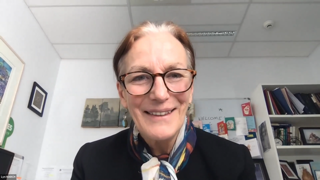
Prof Lyn March
It’s taken a quarter of a century, but NSW has led the way in creating a network of Osteoporosis Refracture Prevention services that now cover every Local Health District (LHD) in the state, according to Sydney rheumatologist Professor Lyn March.
Speaking at the Sydney Musculoskeletal Bone & Joint Health Alliance (SydMSK 2020) annual scientific meeting, Professor March said what had started out as an idea in 1994 has now become a model of care in all 31 LHDs in the state, and is attracting interest and attention not just from other states but from overseas.
Professor March told the meeting that it has been an “amazing achievement” to establish a new pathway of care to take action on the compelling evidence that osteoporotic fractures are associated with high risk of falls, refractures and mortality – and that these can be prevented.
“Despite all these data showing that someone is going to refracture over the next five years and that a hip fracture costs a lot of money and has a high burden of disability and deaths, there is still this osteoporosis care gap,” she said.
Professor March said much of the groundwork was done by the NSW Agency for Clinical Innovation MSK. And after many years of setbacks and frustrations in advocating for services to prevent refractures, she said one of the key factors in success was having evaluations from pilot programs that provide clear evidence to show they promote use of effective treatments and make a significant difference to patient outcomes.
In her own Royal North Shore Hospital, a fracture liaison co-ordinator nurse who oversaw 305 patients with fractures resulted in 60% starting on new osteoporosis treatment, and the number of refractures was halved from 13.5% expected to 6.6% observed at two years.
And another lesson learned in advocating for the implementation of the ORP model of care has been to portray it as a method for preventing hospitals admissions and freeing up beds. With the Royal North Shore evaluation showing savings of around $100,000 per fracture prevented, the financial implications made this a more attractive financial proposition to administrators than asking for funding of a ‘Fracture Liaison Service’, she said.
Professor March told the meeting that early experience showed there was little benefit from implementing a single intervention such as reminder letters to GPs. Instead, it was essential to bring all the parts together and have someone to co-ordinate a pathway of care with multiple interventions to identify those at risk and ensure they were referred to the most appropriate services and receive the right treatment, education and follow up.
Setting up an ORP model of care also required lobbying and consultation at many different levels, from global (WHO), national, state and local health district, and even at the individual hospital, she said.
Professor March cited the example of the National Osteoporosis Summit organised by the federal government in 2008, which showed a lot of promise but ultimately proved highly disappointing when the government got cold feet on implementing its recommendations. This showed the importance of seizing all opportunities, as the advocates for ORP then switched to state level, when NSW Health showed interest in models of care that could potentially reduce hospital admissions.
Early data from evaluation of the first 1000 patients managed by the ORP had shown some interesting and promising results, she said, such as a high proportion of patients – almost half having upper limb fractures, and 4.2% having had hip fracture. It also showed that conversion to treatment rates were low, with 70% of participants recommended for treatment but only half having it started in the clinic. This showed the importance of developing a hip fracture treatment pathway that includes liaison between GPs and orthopaedic services, said Professor March.
“We are always changing and reinventing ourselves and trying to make a difference, and I would finish by saying never underestimate the power of a network of people all pulling together,” she said.